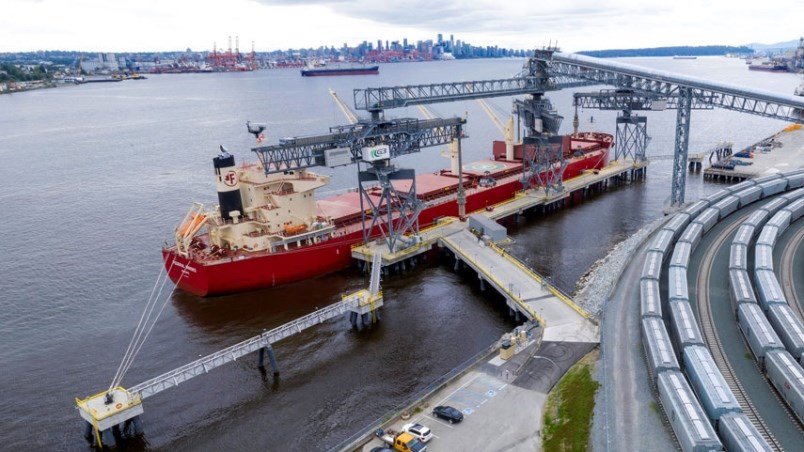The volume of grain passing through the Port of Vancouver is through the roof in 2021, thanks in large part to a massive new North Shore export terminal that came online last year.
The Vancouver Fraser Port Authority released its mid-year cargo statistics on Thursday, showing that a record 18,730,982 tonnes of barley, canola, wheat and other crops moved through the port in the first half of the year – up 14 per cent from last year.
Although the amount of cargo handled by specific terminals is considered a trade secret, it’s no secret that G3’s new terminal came online in July 2020.
“A lot of it's actually about G3. It’s obviously a North Shore story,” said Robin Silvester, the port’s CEO. “It's all responding to that overall demand trend.”
In the last five to 10 years, agricultural firms have invested about $1 billion in export capacity around Vancouver, the largest being G3, Silvester said.
“I think they've now hit port records for rates of unloading rail cars and rates of loading ships so that the new technology they've invested in really is proving out very efficiently,” he said.
Because of droughts and heat waves bringing lower crop yields this year, the port is expecting possibly lower numbers next year, but as long as there is a growing global population to feed, and successful agriculture in Canada, Silvester said he expects grain exports to remain strong.
“There are a lot of fundamentals that are in our favour as a nation,” he said.
In previous years, some agricultural exports have been whipsawed in trade and diplomatic disputes, including bans on Canadian canola imports from China, wheat into Saudi Arabia and pulses and lentils going to India. But Silvester said the laws of supply and demand mean those disputes are usually short lived.
“It does seem that things might be a little calmer. That volatility south of the border is maybe not quite what it was a couple of years ago,” he said.
Seaspan decision due soon
The port authority is due to render a decision later this year on Seaspan’s application to expand its Vancouver Drydock operations to a new water lot west of its existing ones near Burrard Dry Dock Pier.
The proposal has raised ire from nearby residents and City of North Vancouver council, which has formally requested it be amended and moved to the east of the existing dry docks to minimize noise, light and view impacts on neighbouring residential lands and The Shipyards public space.
The port did extend Seaspan’s consultation period to allow for more input from residents and the municipality, and Silvester said he is expecting a report on that consultation soon.
“It’s an important permit application, obviously one the community has a lot of interest in and some concerns about. We really want to see what they’ve learned from the consultation and how they’re going to take those concerns into account,” he said, noting city Mayor Linda Buchanan raised it with him earlier this week. “We take it very seriously. We’re obliged under the Canada Marine Act and Environmental Assessment Act to consult properly with the community … and seek to mitigate impacts where possible.”
The port, however, can only make a decision about the application submitted to it and cannot unilaterally dictate what Seaspan could or should do with its proposal, Silvester added.



